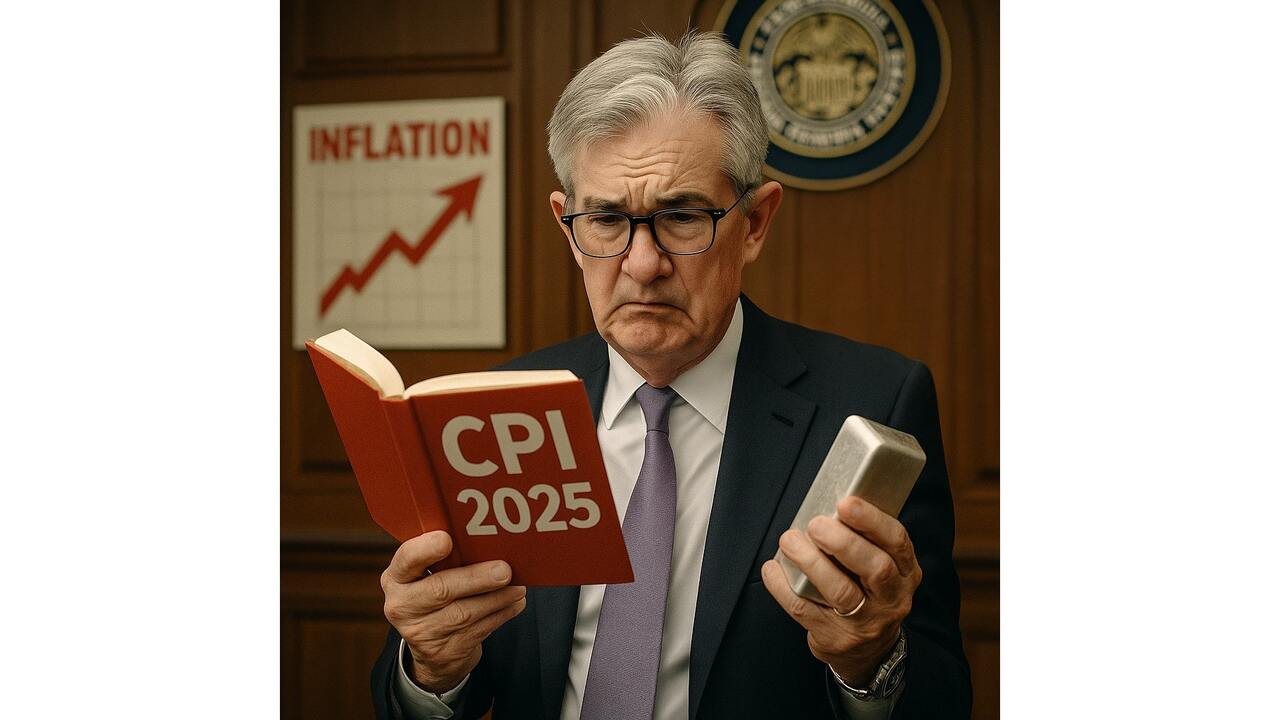(Money Metals News Service) In the latest Money Metals Midweek Memo, host Mike Maharrey delivered sharp commentary on June’s Consumer Price Index (CPI) report, clarified the difference between price and monetary inflation, and laid out a powerful argument for silver.
With inflationary forces still quietly building and the Federal Reserve cornered on interest rates, Maharrey warned that investors ignoring silver might be missing a golden opportunity.
Inflation: Depends How You Slice It
Maharrey opened with a metaphor: a man coming toward you with a knife could be dangerous—or just about to carve a roast. It depends on the context. That, he argued, is how we should approach the CPI data. The same numbers can be good or bad depending on your perspective.
June’s headline CPI jumped to 2.7 percent from 2.4 percent in May, slightly higher than the forecasted 2.6 percent. Month-over-month, prices rose 0.3 percent. That may seem minor, but if that pace continues for a year, it results in an annualized rate of 3.6 percent—far above the Federal Reserve’s 2 percent inflation target.
Core CPI, which excludes food and energy, increased 0.2 percent for the month and held steady at 2.9 percent year-over-year. That was below expectations and offered a glimmer of hope to dovish commentators.
CPI vs. Real Inflation
The official CPI may capture some aspects of rising prices, but it doesn’t tell the whole story.
Maharrey emphasized that CPI is a flawed tool, shaped by political interests and methodological revisions. He pointed out that if we used the pre-1990s CPI formula, inflation would be nearly double the official number—closer to 6 percent.
That’s because CPI tracks price inflation, not monetary inflation. The real root cause of inflation, Maharrey explained, is the expansion of the money supply. Since 2008, the U.S. government has injected roughly $9 trillion into the economy. That’s the source of the current inflationary spiral.
The Fed Is Trapped
The debate over whether to cut interest rates is intensifying. Maharrey believes the Fed will ultimately cut rates at least once, possibly twice, by the end of 2025. But the move will come at a cost. Lowering rates loosens monetary conditions and accelerates the expansion of credit and money—fueling further price inflation down the road.
He described the situation as a catch-22. Keeping rates high threatens to break a debt-ridden economy. Cutting rates risks stoking inflation. Either way, the Fed has no good options.
Silver Is Still Cheap
Despite a brief rally that saw silver climb above $39 an ounce earlier this week, Maharrey argued the metal is still underpriced. One key indicator is the gold-silver ratio—the number of ounces of silver it takes to buy one ounce of gold.
Right now, that ratio stands at 88 to 1. The modern historical average is closer to 60 to 1. Whenever the ratio gets too far out of balance, it tends to snap back—usually through a rapid rise in silver.
In 2020, during the height of pandemic panic, the ratio hit 123 to 1 before crashing back to 60. In 2011, it fell from over 80 to 1 to just 30 to 1 as silver spiked. Maharrey believes another correction is coming—and it will likely favor silver again.
Supply and Demand Imbalance
Silver’s fundamentals are just as bullish. For the fourth straight year in 2024, global silver demand outpaced new supply. The market deficit reached 148.9 million ounces, driven primarily by industrial demand.
Notably, that deficit occurred even though investment demand was relatively weak in 2024. But early signs in 2025 show that trend reversing. Through the first six months of the year, silver ETF inflows totaled 95 million ounces—more than all of 2024 combined.
Global ETF holdings now stand at 1.13 billion ounces, and the value of those holdings just exceeded $40 billion for the first time. The June surge was the largest monthly increase in silver ETF flows since the Reddit-driven silver squeeze of early 2021.
Global Demand Is Surging—Except in the U.S.
Much of the renewed investment demand is coming from overseas. India saw a 7 percent increase in physical silver investment during the first half of 2025, and European buyers are returning to the market as well. A slowdown in secondary sales is boosting demand for newly minted bars and coins.
In contrast, U.S. retail investors remain hesitant. Demand for physical silver in the U.S. fell by about 30 percent in the first half of the year. Maharrey said many Americans are taking profits instead of buying, missing what could be a significant opportunity.
Technical Setup: Cup and Handle Breakout
The technical charts support the bullish case. Silver is showing a long-term cup and handle pattern—one of the most reliable bullish setups in technical analysis. The two major peaks—1980 and 2011—form the rim of the cup, with the long handle playing out over the last decade.
Now, according to analysts like Clive Maund, silver appears to be breaking out of that handle. A similar pattern preceded gold’s breakout to record highs in 2023. If silver follows the same trajectory, there could be significant upside ahead.
Final Thoughts: Get the Insurance Before the Fire
Maharrey concluded with a warning and a recommendation. Inflation may look cooler than it did a year ago, but the fundamentals—monetary expansion, Fed indecision, and tight silver supply—remain firmly in place.
That’s why he views silver as a form of financial insurance. And like all insurance, the best time to buy is before the fire starts.
He urged listeners to call Money Metals Exchange at 1-800-800-1865 or visit MoneyMetals.com to explore their silver and gold investment options. For those on a budget, he recommended the company’s monthly installment plan to accumulate metals gradually over time.
Silver may be nearing $40, but Maharrey believes the price is still low relative to its true potential.

